Surviving the United States Air Force Arctic Survival School
July 5th, 2024
8 minute read
I signed in at Fort Wainwright, Alaska, at the very end of September when it was just starting to get properly cold. As I rotated through the battalion headquarters, I met the assistant S3, a CW3 Warrant Officer named Matt. Our initial conversation went something like this, “Hey, sir. You want to go to Cool School?”
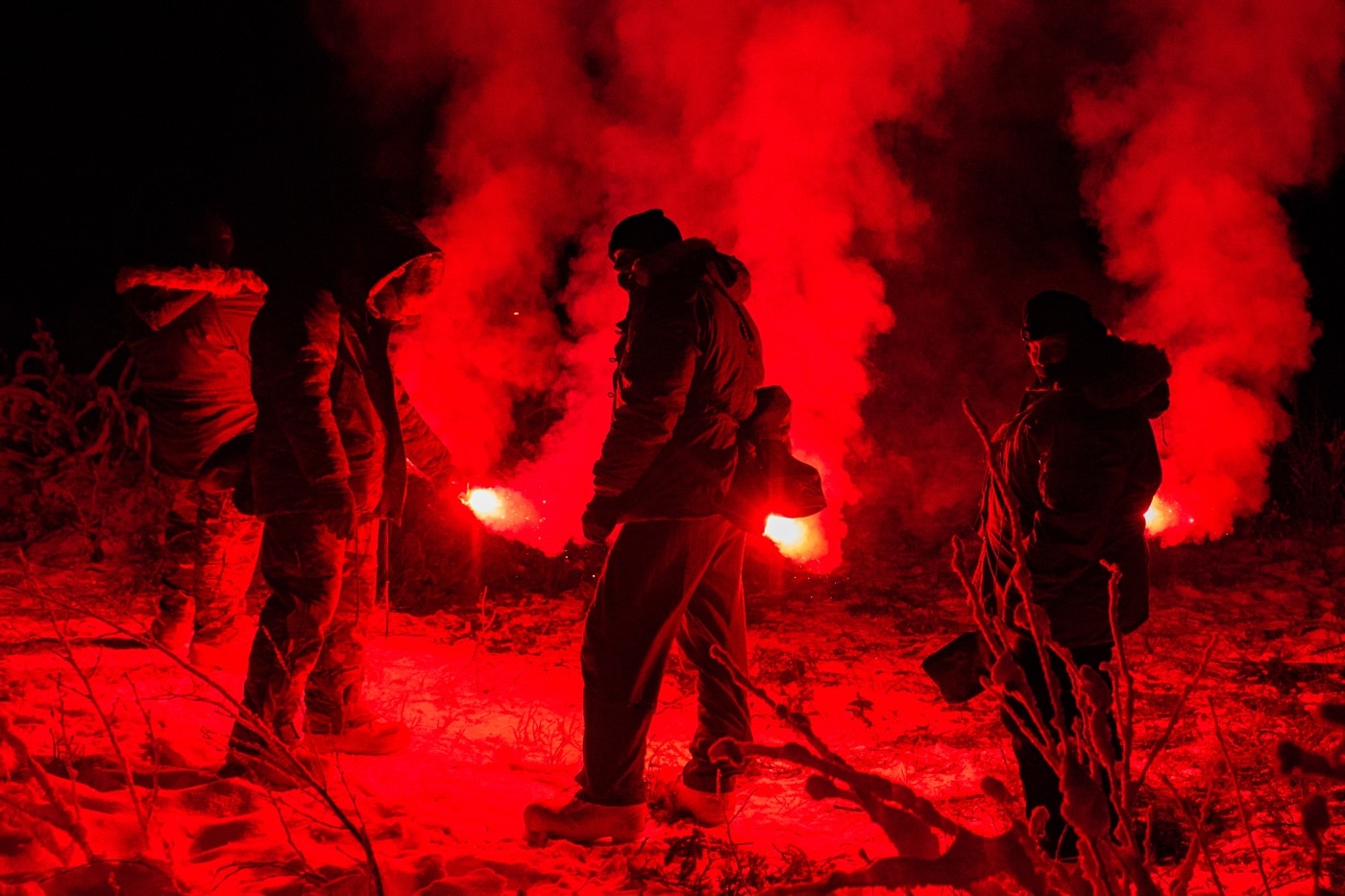
I pondered that for about a microsecond and responded in the affirmative. I had no idea what Cool School was, but I was an Army Aviator. Perhaps I could teach the instructors a few things about being cool?
It seemed I was an imbecile.
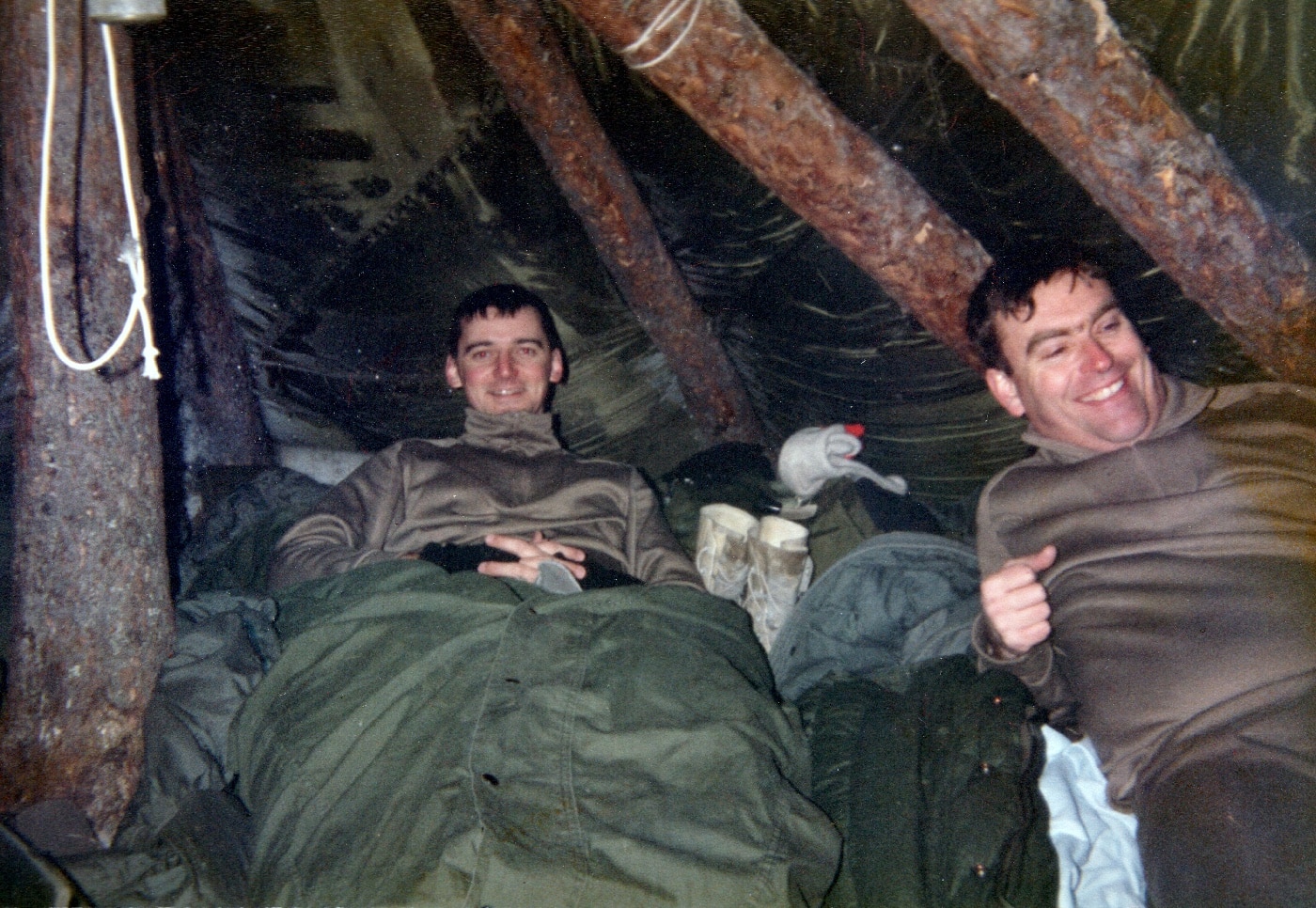
Cool School was a euphemism for the United States Air Force Arctic Survival School taught next door at Eielson Air Force Base. Those in the know called it the Air Force Food Appreciation Course. That’s because there basically wasn’t any.
Arctic Survival
The scenario was that I was the lone survivor of a plane crash deep in the Arctic wastes. I had a single Meal, Ready-to-Eat (MRE), a parachute, and the sort of survival gear one might find in the modest fighter aircraft ejection seat survival kit from an Air Force fighter plane. That meant a couple of ways to make fire, some cord and wire, three small blocks of some ghastly survival food, a compressed arctic sleeping bag, and a few other odds and ends. By the time I got slotted for the class, it was butt cold.
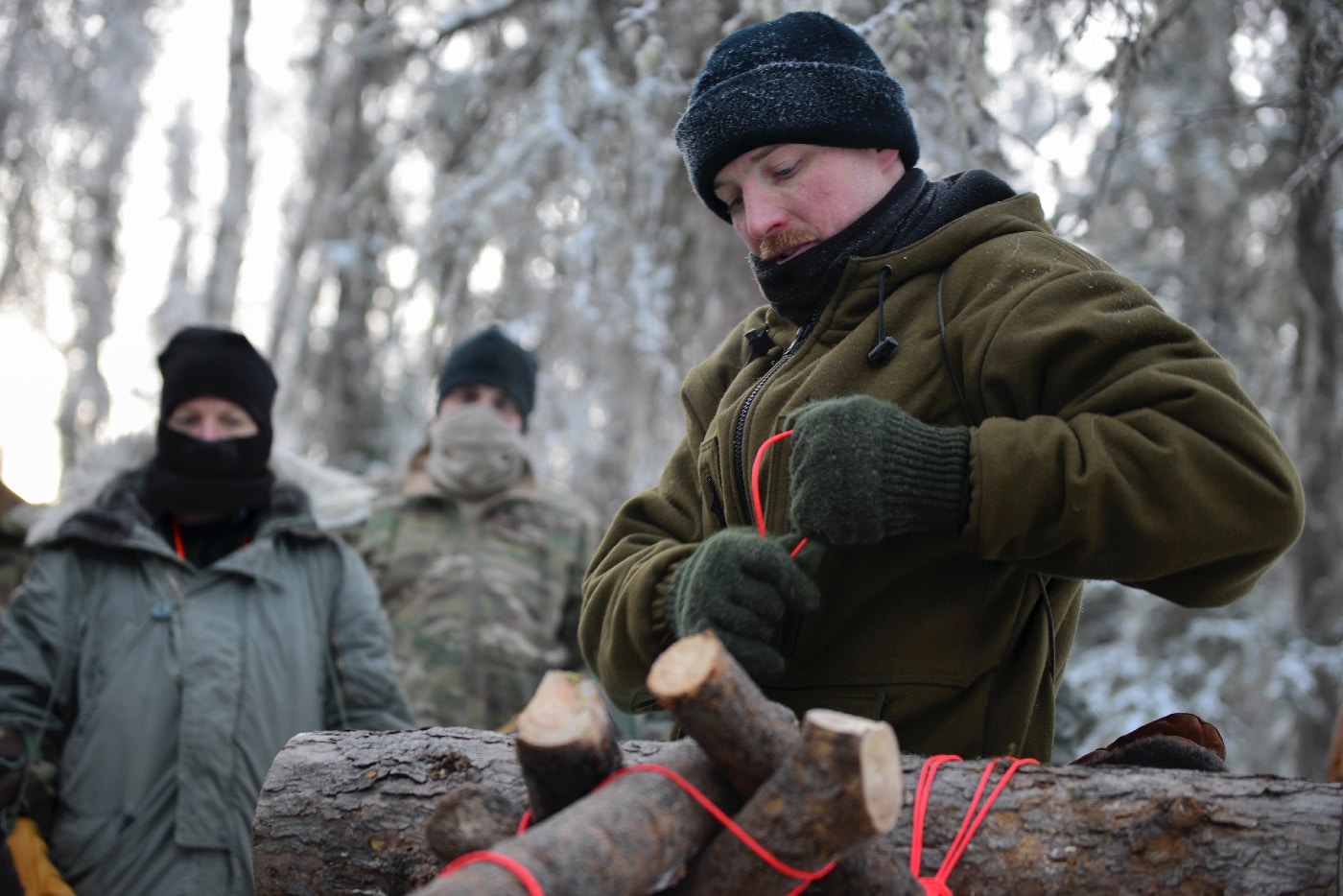
The curriculum was actually fairly simple. As this was an Air Force enterprise, there wasn’t any yelling or screaming. It was a gentleman’s course. The objective was indeed simply to survive.
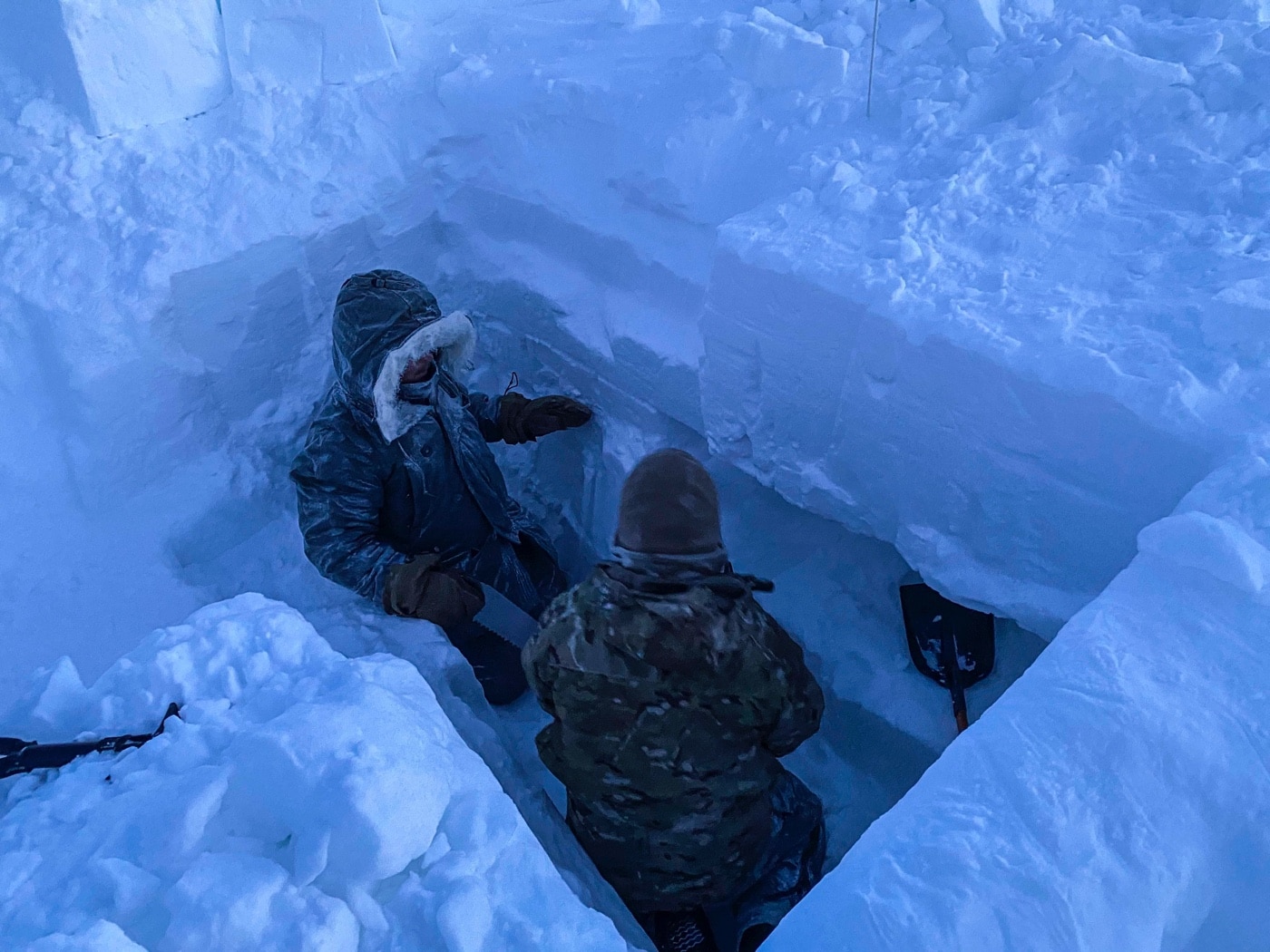
The first night was spent in a pre-built communal shelter made of logs. The tiny thermometer I hung from my jacket told me it was 34 degrees below zero. The class consisted of about a dozen people — Army flight crews, Air Force fighter pilots, and a couple of USAF ALSE (Aviation Life Support Equipment) techs. Those poor slobs packed the survival gear, so the Air Force made them use it from time to time to ensure they had skin in the game.
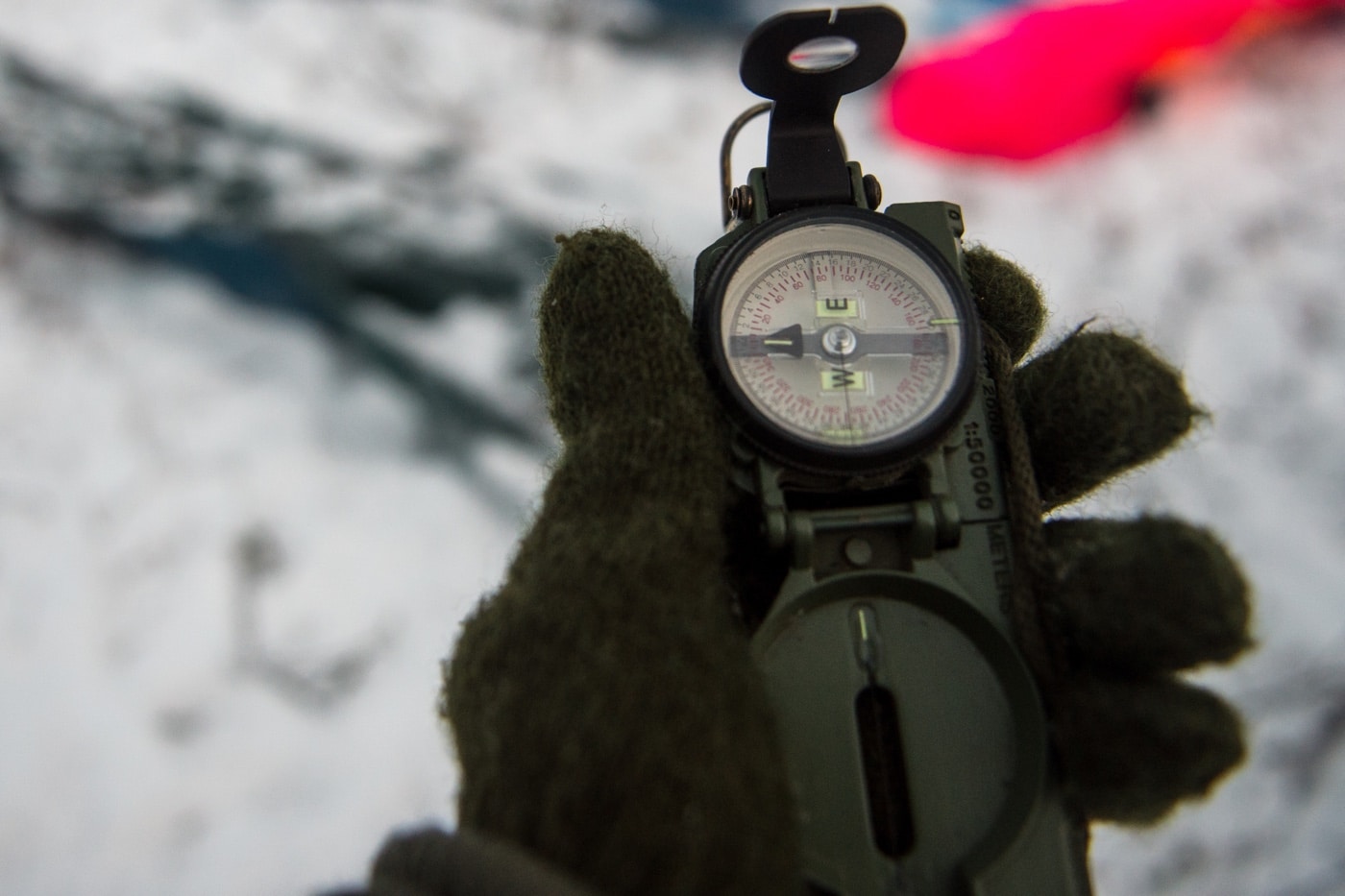
One full day was spent crafting a snow cave. Doing so involved digging the snow away all the way to the ground with a scrap of aluminum about the size of a pie plate. The snow was maybe three or four feet deep. This took forever. It was also surprisingly hard work. Even at 30 below zero, I worked up a sweat underneath my arctic parka.
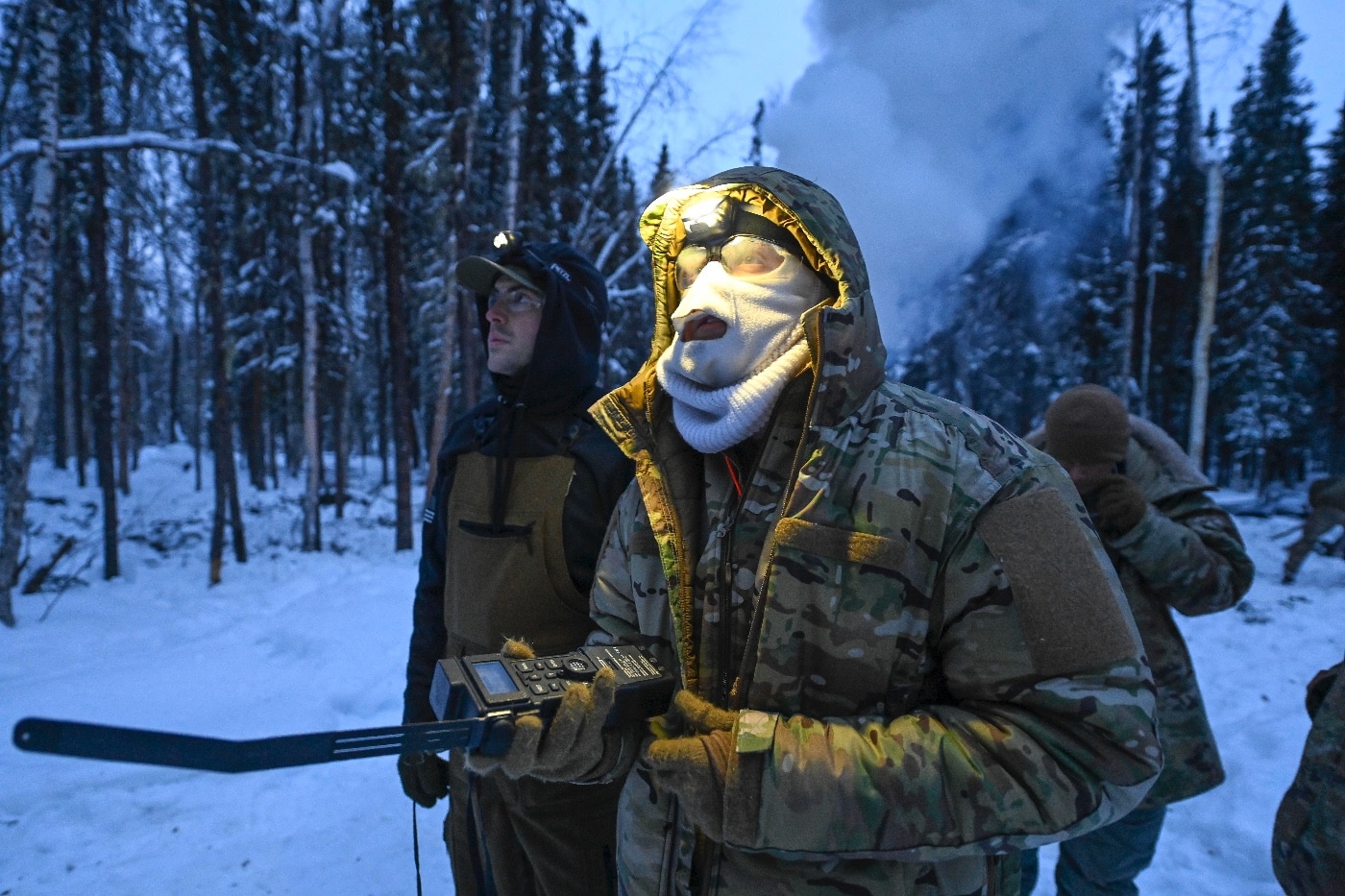
Keeping hydrated is a perennial chore in such places, and drinking freezing cold water is not natural when it is that chilly out. Additionally, the only source of potable water was snow. The tool the military gives you to harvest water from snow is a small rubber bladder. You pack that bad boy full of snow and then stuff it into your shirt against your skin suspended on a cord. As you work, your body heat melts the snow so you can drink it. At least that’s the theory.
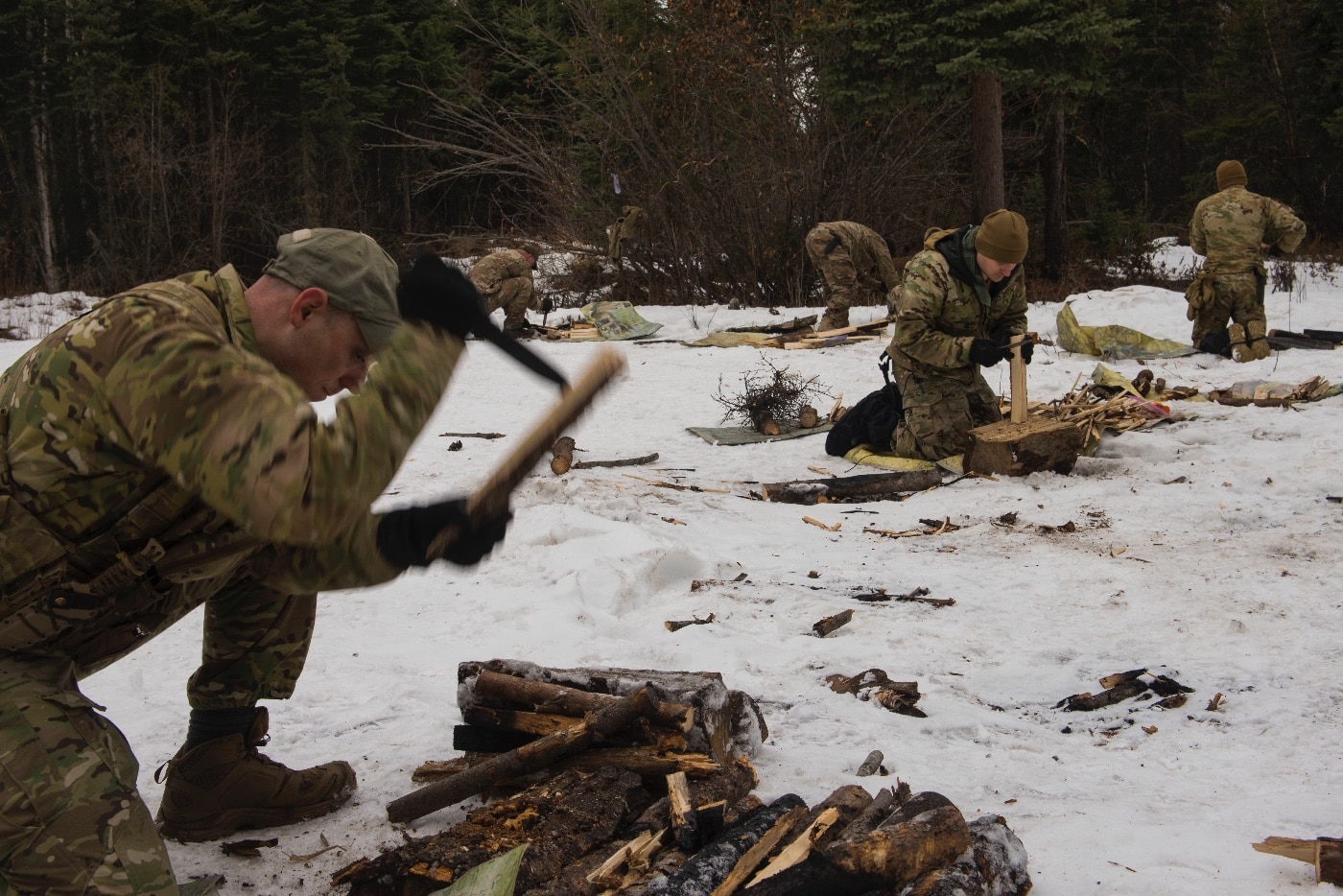
In practice, stuffing a bag full of snow down into your clothes in subzero weather sucks; like, a lot. However, failure to do so means dehydration and death. That’s motivational.
Shelter
Once you have your hole dug in the snow, you arrange a spine out of a thin log and form it into an A-frame of sorts using smaller pieces of wood secured with parachute cord. One end of the shelter forms a triangle big enough to crawl into. The other tapers down to the ground. You then cover the whole thing with a piece of parachute. After that, you mound up three or four feet of packed snow on top. Building a decent snow cave takes all day. As it is Alaska in the winter, much of that day is also dark. Fortunately, by then the bears are hibernating.
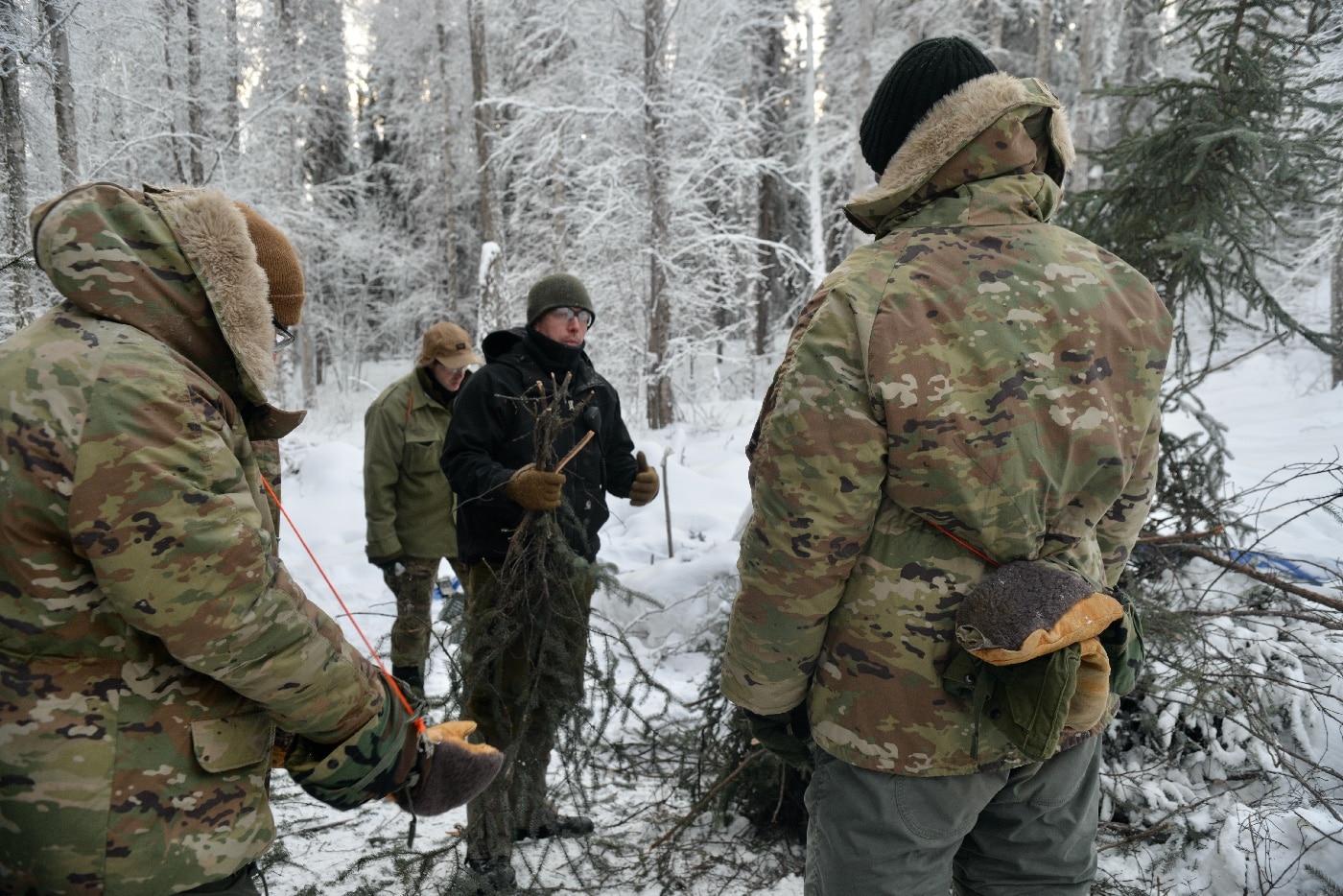
You then lay out a piece of parachute, pile snow on it, and tie it up into a ball to make a door for your snow cave. Cover the ground inside and arrange your sleeping bag. Devote at least half an hour of intense effort to fluffing that thing up. Your sleeping bag only works if it has plenty of lofty dead air space in it. With the shelter complete you are now pretty spanked and terribly hungry.
Sustenance
You burn an astronomical amount of energy just maintaining your body temperature in those climes. I inhaled every single edible thing in that MRE, to include licking the inside of the foil packet clean that contained my cocoa beverage powder. I was also fortunate enough to snare a big Alaskan rabbit.
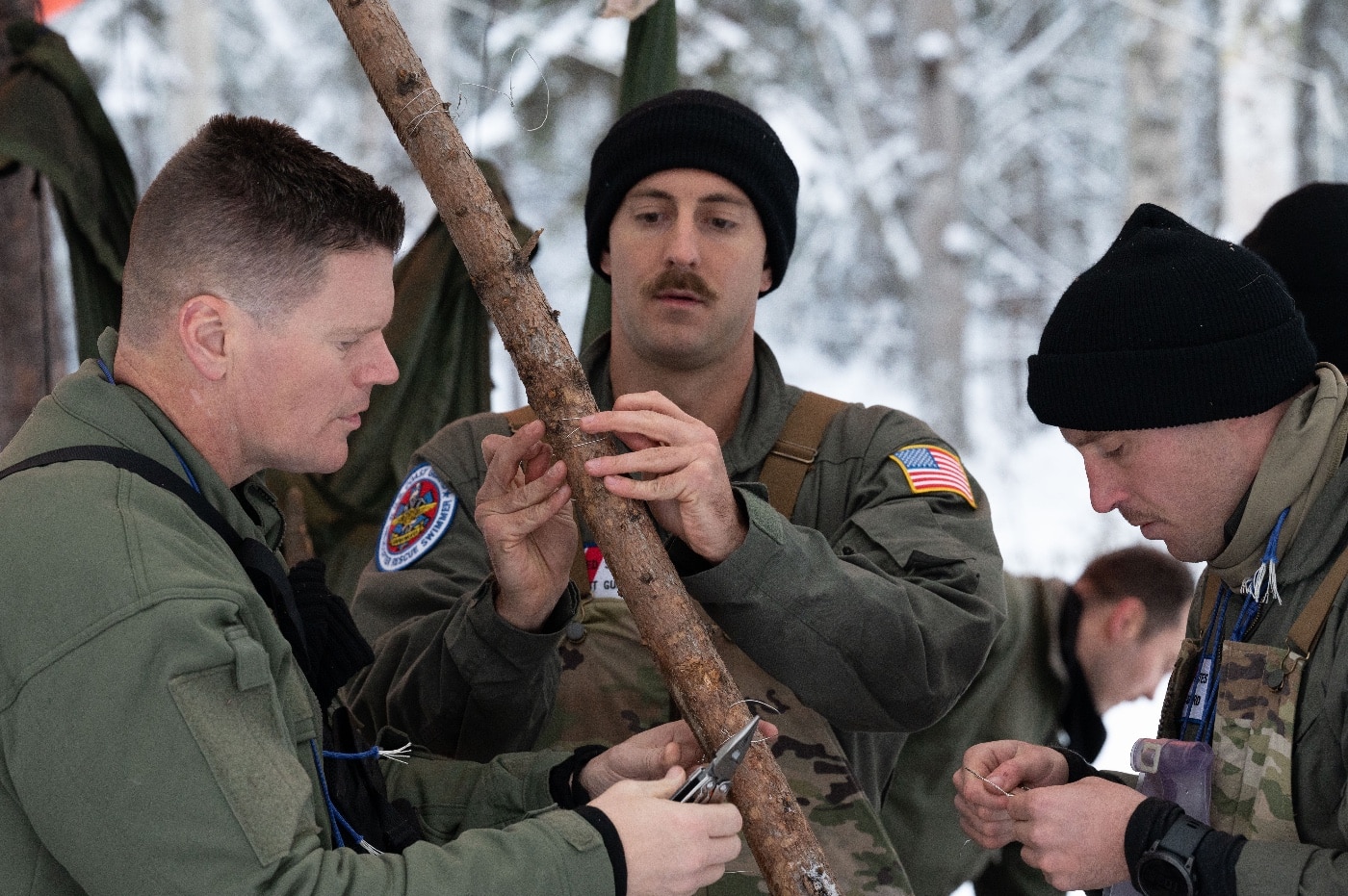
Prepping an animal for consumption is an interesting chore in Alaska in wintertime. The first step is to just set the animal out someplace for about an hour and let it freeze hard. Meanwhile, you build a big fire. When the snow is three feet deep everywhere, that brings its own challenges. Once the fire is blazing you take a big can, fill it with snow, and suspend it over the flames. You keep adding snow until you have a can full of boiling water. This also takes about forever.
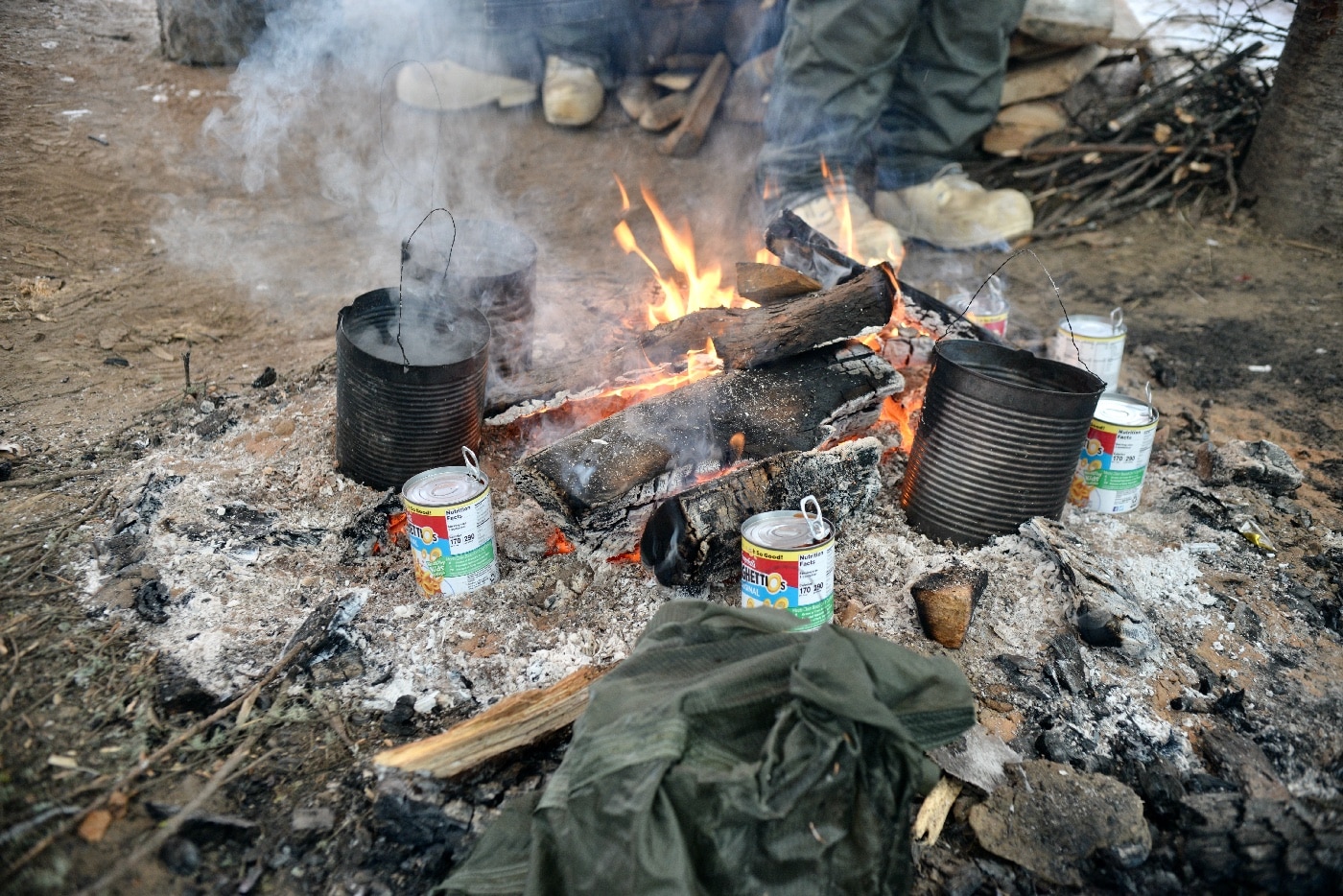
While this was going on, you take that rabbit and bang it over a stump to break the head off. As the beast is by now deep frozen, this is disturbingly easy. You then do the same thing with each leg. Estimating where the diaphragm might be, the dedicated survivor cuts the creature into two pieces amidships with a hacksaw. Each piece then briefly goes into the boiling water.
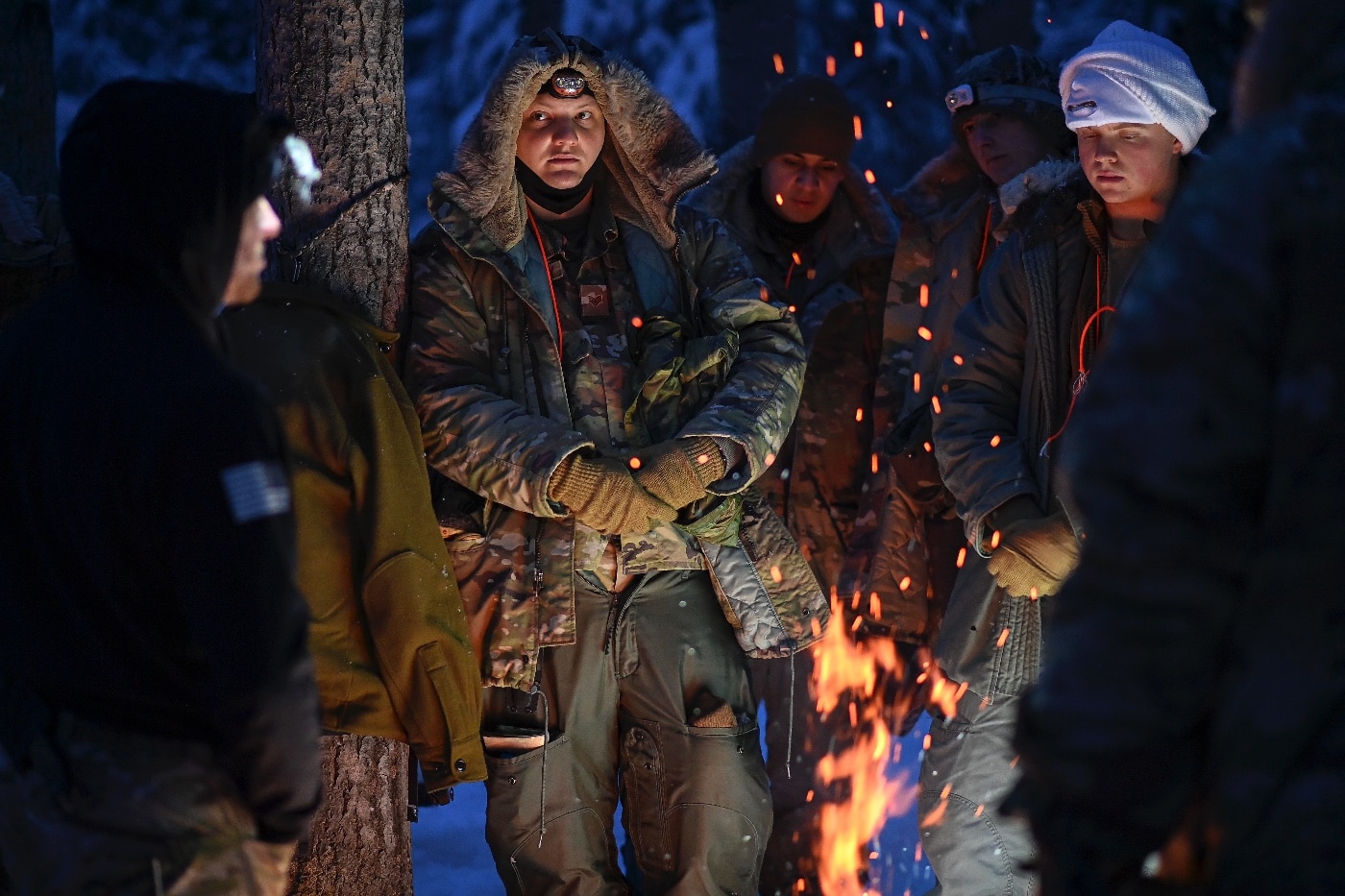
After a quick scalding the skin comes right off. You then smack the rear half over the stump to break off the frozen guts as a single unit. These you save as bait for your next set of traps. At that point, you have two meaty chunks of hard-frozen rabbit. These go back into the boiling water for a while. All little animals like these are full of parasites. Heat is the only thing that sterilizes them.
While the rabbit was boiling, I resolved to dry out my socks. I got the fire going as big as I could manage and then stuck my feet near it. I have pretty average-sized feet. It was so cold that the toes of my socks began to smolder as the heels began frosting over with ice. We clearly weren’t in Kansas anymore…
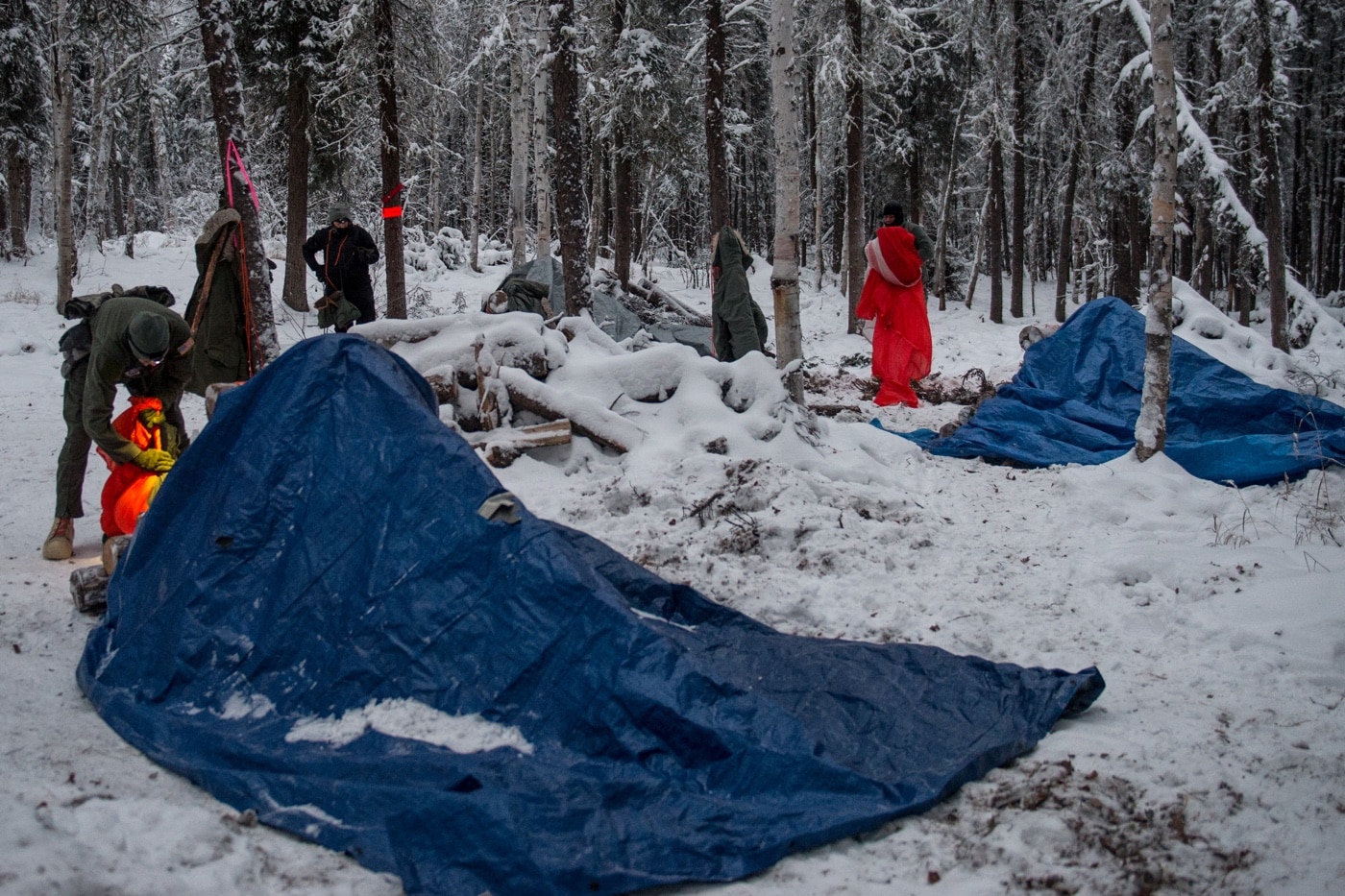
Perhaps an hour after that I was enjoying some stringy gray boiled rabbit. That tasted about as good as it sounds. However, it was hot and it was filling. Incidentally, even after eating everything in that MRE as well as that ghastly boiled bunny, I still came home with two of those three bars of compressed survival food untouched. That stuff was literally inedible.
A Good Night’s Sleep
Once I slipped into my sleeping bag I pulled the door plug in place and sealed the edges with packed snow. I lit a candle for illumination, though that did nothing to warm the place up. I then shivered for about two hours straight.
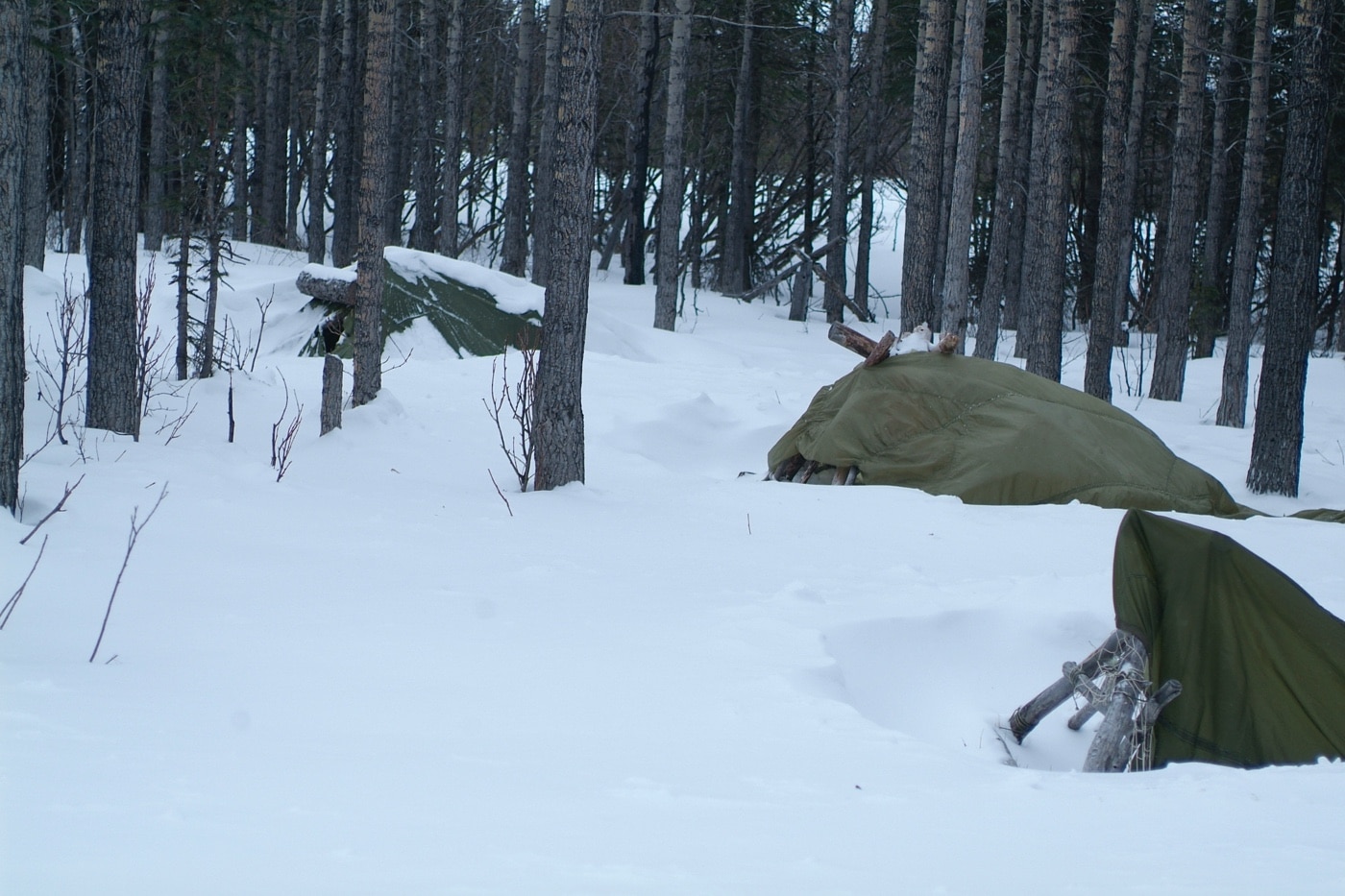
You get a little baseline heat from the ground, and packed snow is a surprisingly good insulator. My little thermometer informed me that it was 43 degrees below zero. However, after two hours of shivering in that frozen sack, I finally warmed up and subsequently slept like a baby. The following morning it was time to pack up and head home.
Ruminations
I got home to find that my precious wife had fixed a big pot of her legendary chili. I ate chili until I could barely walk and then dragged myself upstairs to the shower. Our house was heated via a central system that pumped hot ethylene glycol to all the structures on post. Hot water came from a heat exchanger in the basement and would run literally forever. I spent the next two hours basting in the shower until I could no longer stand.
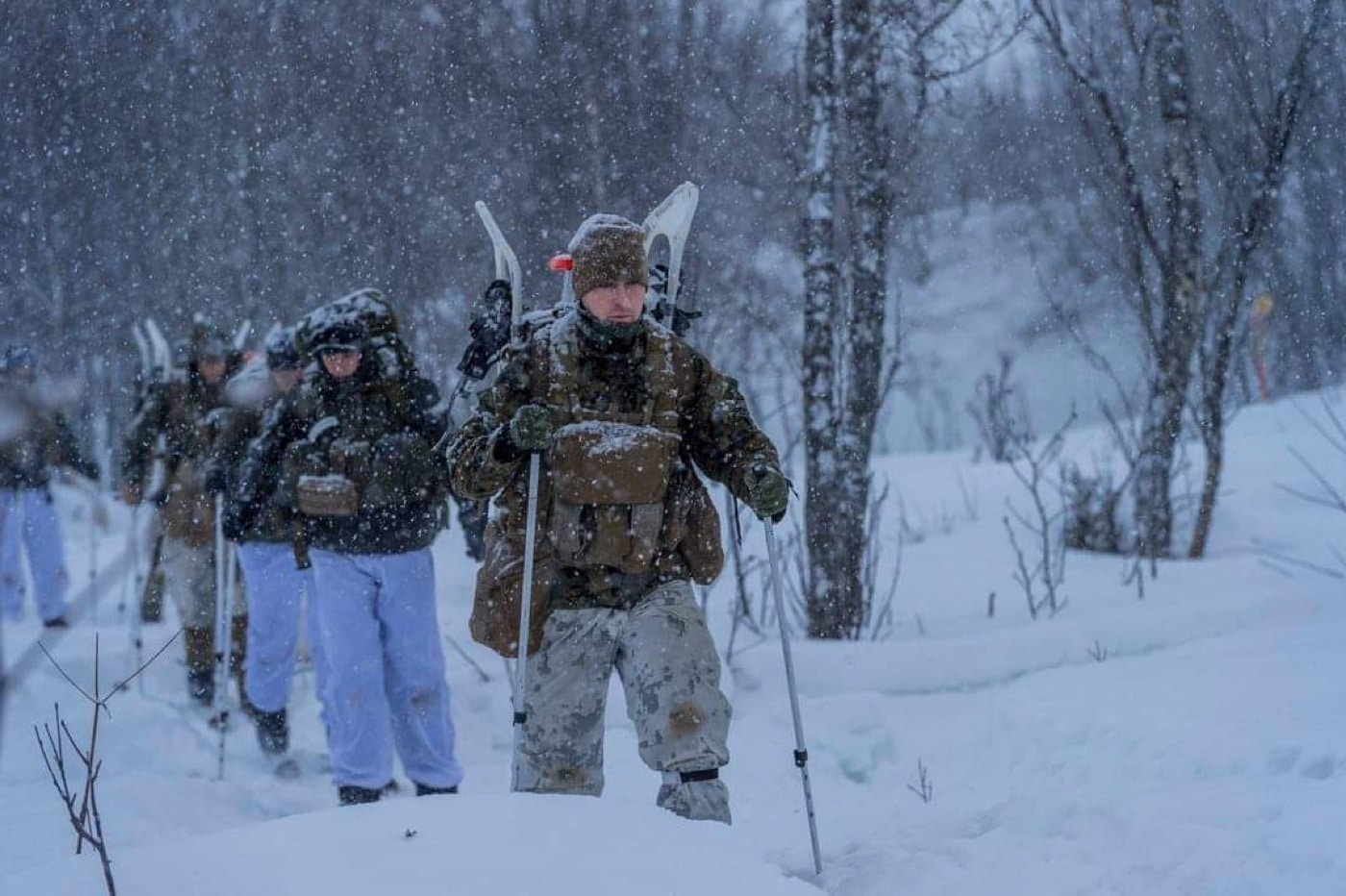
I did learn a lot at Cool School. I learned that you can indeed survive in the arctic at 43 below zero with nothing but your wits and a little well-reasoned gear. I also learned that I never again wish to eat boiled rabbit. All in all, I’d say those were cheap lessons.
Editor’s Note: Be sure to check out The Armory Life Forum, where you can comment about our daily articles, as well as just talk guns and gear. Click the “Go To Forum Thread” link below to jump in!
Join the Discussion
Continue Reading
Did you enjoy this article?

 381
381





